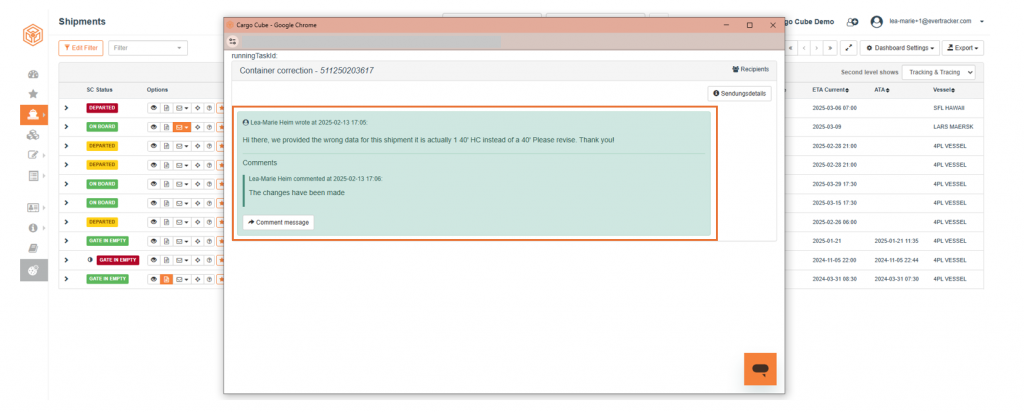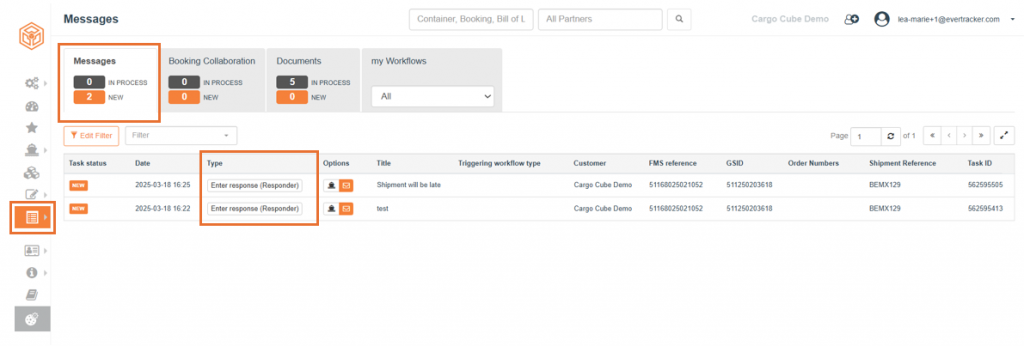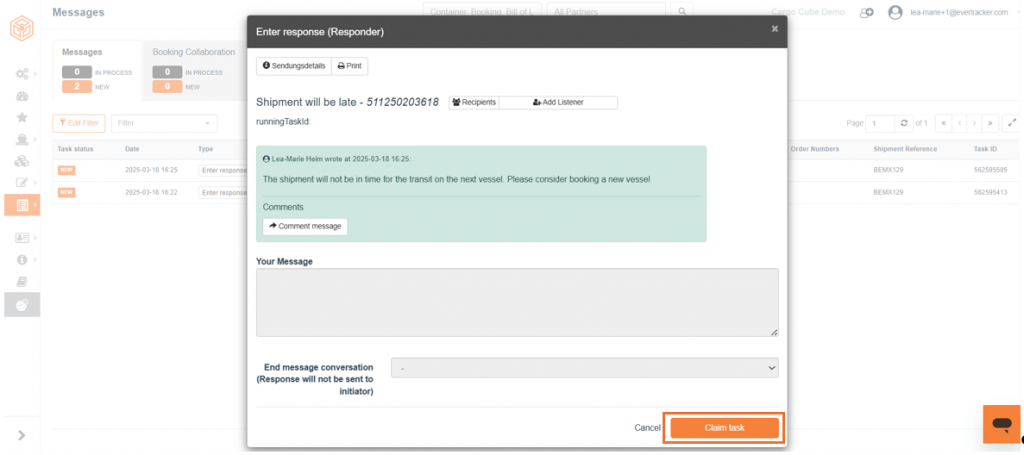Partner Collaboration (5)
You have a transport related question or want to provide your partners with transport information? For this purpose, you can use our messaging feature. All involved parties with dashboard access have the option of sending a transaction-related message, for example relating to a specific shipment, container etc. The dialog opens by clicking on the “Messages” button (letter icon) within the options area on the overview pages. A colored button indicates that there is a message for this transaction.

Within the dialog, you can write your message. You can also enter a title and select recipients there. Using the button „Add Listener“, you can involve additional e-mail addresses to keep external users informed.

If you want to view the entire dialog for a transaction, you can select “Show all messages” option, using the message button.

In order to professionaly conduct import bookings we use an integrated booking workflow which enables structured communication between the destination office and the respective origin office or agent. All recurring steps of the booking communication are done via workflow task. The data exchanged within the process is saved in a structured way and fed into the shipment in our ERP system. The typical steps within the workflow are:
- Supplier contact
- Agent provides booking options
- Forwarder confirms or refuses booking options
- Agent places booking with the carrier
- Agent confirms booking according to the prior negotiation
Document Exchange
All participants on Cargo Cube can exchange documents with each other. Documents provided of and for different user groups are originated in our central document server. Documents provided by different user groups are uploaded on Cargo Cube and transferred to our central document server.
You can access the upload dialog by clicking on the “Document” button in the options column of your shipment.

You will also find an upload functionality within your shipment details, using the tab “Documents”.
Document Correction
Cargo Cube offers a document correction process based on an embedded PDF editor. Classically this function is used between your freight forwarder and customers to correct BL drafts.
Cargo Cube can be accessed by all participants represented within the supply chain. These parties can interact in different ways with each other or provide information on the platform. Parties that can access the platform are:
- Supplier – provides status on production orders
- Agent – interacts with your providers regarding import bookings
- Buyer (Customer´s customer) – can view their shipments
- Customs broker – provides customs related status updates
- Trucker – provides trucking related status updates
- Warehouse provider – upload warehouse transaction data
As soon as a message is sent within the platform, Cargo Cube starts a workflow task. That means: The recipient gets a message as a task to be processed. All message tasks are shown in the “Messages” tab table within “My Tasks” overview page. You can enter there via “Tasks” entry in the main menu.

A message can be edited by clicking on the ” column entry “Type”. Before editing, the user must assign the task.

After final processing, the message disappears from the list of message tasks.
